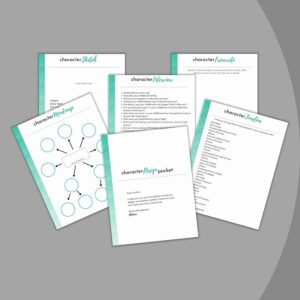
Outline Your Novel
Writers are not only passionate about their writing, but many are just as passionate about whether or not to outline.
There are as many reasons to outline your novel as to not outline. And, there are as many outlining techniques as there are writers. You have to ask yourself if you are an outline writer (planner) or a fly-by-the-seat-of-your-pants (pantser) writer. No one can tell you what kind of writer you are, you have to make that decision yourself.
Some writers feel that using an outline curtails their creativity and boxes them into writing the story a certain way. Other writers feel that an outline allows them to be more creative because they’ve already made sure the storyline fits together. Then there are the writers who do a bit of both, they have a general outline but allow themselves freedom to explore other plot lines as they write.
It doesn’t matter what kind of writer you are, only that you use a system that allows you to make the most of your creativity.
Since I am a planner in all aspects of my life, especially when it comes to writing, I’m going to focus on outlining. For me, I need to know that the story isn’t broken in the first place before I begin to write. I’ve tried to be a pantser and I’ve tried to have a vague, loose outline and all that happens is I get lost and write myself into holes. I’ve found that either I outline in the beginning or I outline mid-project so I can finish the book. Outlining mid-project is much longer for me, so I’ve learned to make an outline before I start writing.
Outline Techniques
Perhaps, the word outline conjures up memories of high school or college classes that required the Roman Numeral way of outlining. We all learned to outline that way.
While that is certainly one way, it’s definitely not the only way. There are multiple was to outline and you, as the writer, must determine which process works best for you.
Narrative Synopsis
One way to outline is to write a narrative synopsis of the story and then write a few sentences for each chapter. You can then see your story as a whole as well as picture what will be included in each chapter. You can also use this if an agent or editor asks for a synopsis. These tend to be long documents and can usually be considered as your first draft.
Scene by Scene
Another way is to outline each scene within the chapter. You can write down the scene goal, the obstacles faced in the scene, and the ending disaster for that particular scene.
You can use notecards and write a synopsis on each card for each scene. This allows you the ability to move around scenes and chapters.
You can also color code your notecards for each POV character or for each subplot.
Spreadsheet
Some writers use a spreadsheet program such as Microsoft’s Excel and write a sentence for each scene on each row.
You can include who is the POV character, other characters in that particular scene, time of day, setting, scene goal,, conflict, and disaster .
This method allows you to not only move scenes around, but you can also save your original outline if you need to go back. Other programs that allow you to do similar outlines include: Scrivener and Plottr.
Notebooks and Longhand
Another way to outline is to use a notebook and dedicate each page in the notebook to each chapter. You can write a few sentences to describe what happens in that chapter, which characters are involved, notes about the scenes, questions you need to answer, and specific details you want to include.
You can expand this to dedicate one notebook for each act of the three-act structure. You can expand this even further and actually write your novel by longhand.
My Outlining Process
I have developed my own process over the years. I generally write a one sentence logline for the story which I keep handy to keep me on task as I write. I develop that one sentence into paragraph or two (I often use this as my back cover copy). I then fill out information about my characters as well as the plot points, pinch points, midpoint, climax, and resolution. I fill out scene cards to make sure I have conflict in every scene and then arrange them into my plot.
I have developed an Outline Design Packet to help other writers organize their thoughts and arrange scenes so they don’t have to interrupt their writing time. This is what I use to outline my books.

The most important aspect is to use what works best for you. You can even combine some of these suggestions to create your own outlining system. Don’t feel like you have to stick with one system throughout your writing. Experiment to find what works best.
***If you need some help creating your characters, download my free Character Design Packet here. It will help you create compelling, unforgettable characters that will make your story come alive.

***Need help writing your first chapter? Check out my course: Writing a Fantastic First Chapter.
In this course, Writing a Fantastic First Chapter, you will learn what components you need to include in your first chapter to hook readers. With examples and assignments, you will put into practice what you learn and you can ask questions all along the way. A first chapter checklist, a character sheet, and a character interview are all included as downloads.
Don’t try to write a first chapter in the dark. This course will shine the light on what elements you need to help you navigate writing the all-important first chapter, so you can win over readers.
***Do you already have a manuscript? If you can’t afford an editor, you might be interested in Pro Writing Aid Writing Software. This writing software helps you improve your writing to be the best it can be. It’s like having your own private editor for a fraction of the price. You can try it for free for 2 weeks. You can click here to learn more about it.
***This post may contain affiliate links which may compensate me with no additional cost to you.





